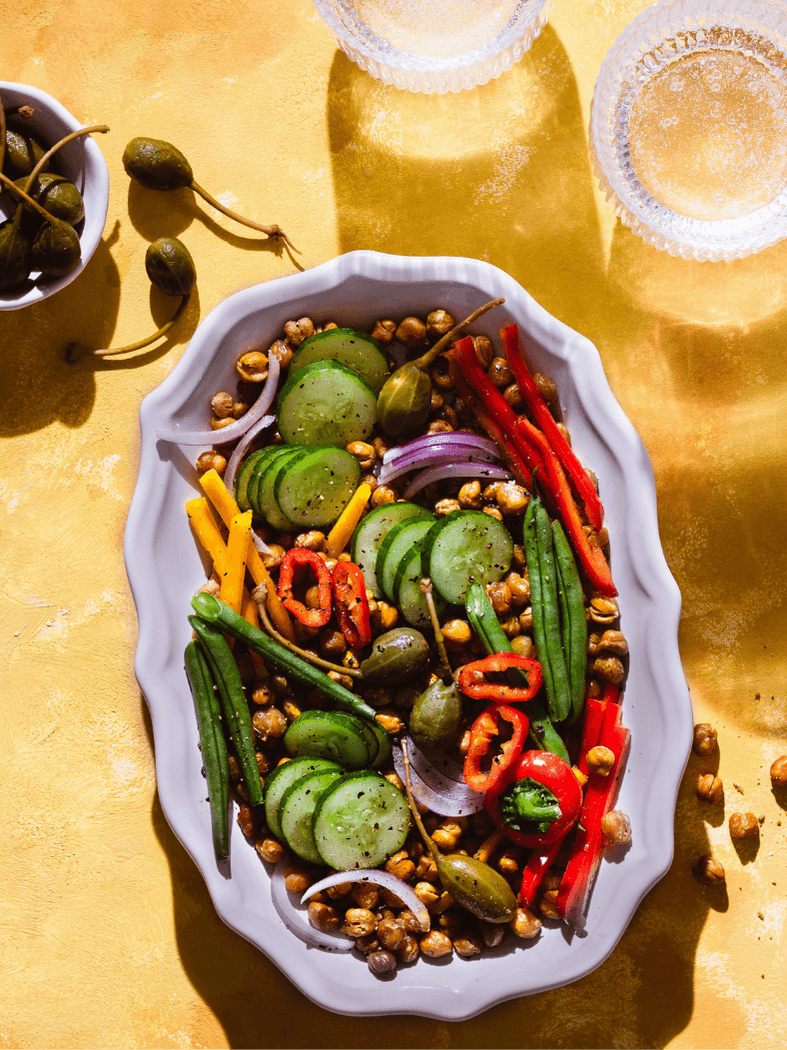The Inspiration for Healthy Living: What is the Mediterranean Diet?

The Mediterranean Diet is defined as a plant-based, nutritious, and balanced lifestyle inspired by the traditional eating habits of communities living along the Mediterranean coast¹. Key elements include plenty of vegetables and fruits, herbs, seafood, olive oil, legumes, and whole grains.
It represents a holistic approach that promotes not only healthy eating but also social interaction, movement, and enjoyment of life².
Nutritional Basis and Structure
The primary foods in this diet are mostly plant-based. Recommended food groups include:
· Vegetables and fruits
· Whole grains (bulgur, oats, brown rice, etc.)
· Legumes (lentils, chickpeas, beans)
· Nuts and seeds
· Fresh herbs and spices
· Healthy fats – especially olive oil²
Animal Products and Fish Consumption
Based on its history in coastal communities, the Mediterranean Diet includes fish and seafood at least twice a week, smaller amounts of dairy products (mostly yogurt and cheese), white meat, and occasionally red meat and sweets.²
Mediterranean Nutrition in 8 Steps
1. Eat plenty of vegetables Vegetables are abundant in the Mediterranean cuisine and form the basis of this diet and its flavors.
2. Change your thinking about meat If you consume meat, eat smaller portions. You can use meat as a side dish instead of a main course or choose a smaller portion for your main meal.
3. Take advantage of dairy products Fermented dairy products are common in the Mediterranean. You can consume small amounts of yogurt and traditional, handmade cheeses.
4. Eat seafood twice a week Fish such as tuna, salmon, and sardines are rich in omega-3 fatty acids. Shellfish such as mussels, oysters, and clams also provide similar benefits for brain and heart health.
5. Go vegetarian one day a week Build your meals around legumes, whole grains, and vegetables; enrich their flavors with the aromatic herbs and spices of the Mediterranean.
6. Use healthy fats Add healthy fat sources to your meals. Opt for extra virgin olive oil, nuts, peanuts, sunflower seeds, olives, and avocados.
7. Switch to whole grains Whole grains like bulgur and brown rice contain more fiber, more protein, and higher levels of many essential nutrients than refined grains.
8. Choose fresh fruit over sweets Choose from a wide variety of Mediterranean fruits, from figs to oranges, pomegranates, grapes, and apples. Save sweets for special occasions or celebrations.
Note from Saledo
We've prepared Mediterranean favorites like gazpacho, pita, and pesto sauce using green banana flour.
🌿 Would you like to try the same flavors with green banana flour, which is rich in fiber and resistant starch?
🍴 Food Dictionary
Gazpacho [gahz-PAH-cho]: A cold tomato soup made with raw vegetables, originating in southern Spain.
👉 Please click here for our Gazpacho made with green banana flour. 🍅🥒
Pesto [PESS-toe]: A sauce made with greens, olive oil, and various other ingredients. The most well-known version is made with basil and pine nuts, but it's also fun to try different combinations like spinach and walnuts.
👉 Click here for our Pesto Sauce made with green banana flour. 🌿
Pita [PEA-tah]: A type of flatbread with a pocket inside, typical of the Middle East.
With its natural ingredients and fiber-rich products, Saledo contributes to the plant-based, nutritious, and balanced lifestyle of the Mediterranean.
👉 Click here for our Pita made with green banana flour. 🫓
References
¹ What is the Mediterranean Diet? Retrieved July 30, 2025, from https://oldwayspt.org/explore-heritage-diets/mediterranean-diet/
² Mediterranean Diet Pyramid. Retrieved July 30, 2025, from https://oldwayspt.org/oldways-resources/mediterranean-diet-pyramid-poster/
³ Mediterranean Diet Background. Retrieved July 30, 2025, from https://oldwayspt.org/for-professionals/heritage-diet-background/mediterranean-diet-background/ ⁴ Mediterranean Diet Pyramid Poster. Retrieved July 30, 2025, from https://oldwayspt.org/oldways-resources/mediterranean-diet-pyramid-poster/